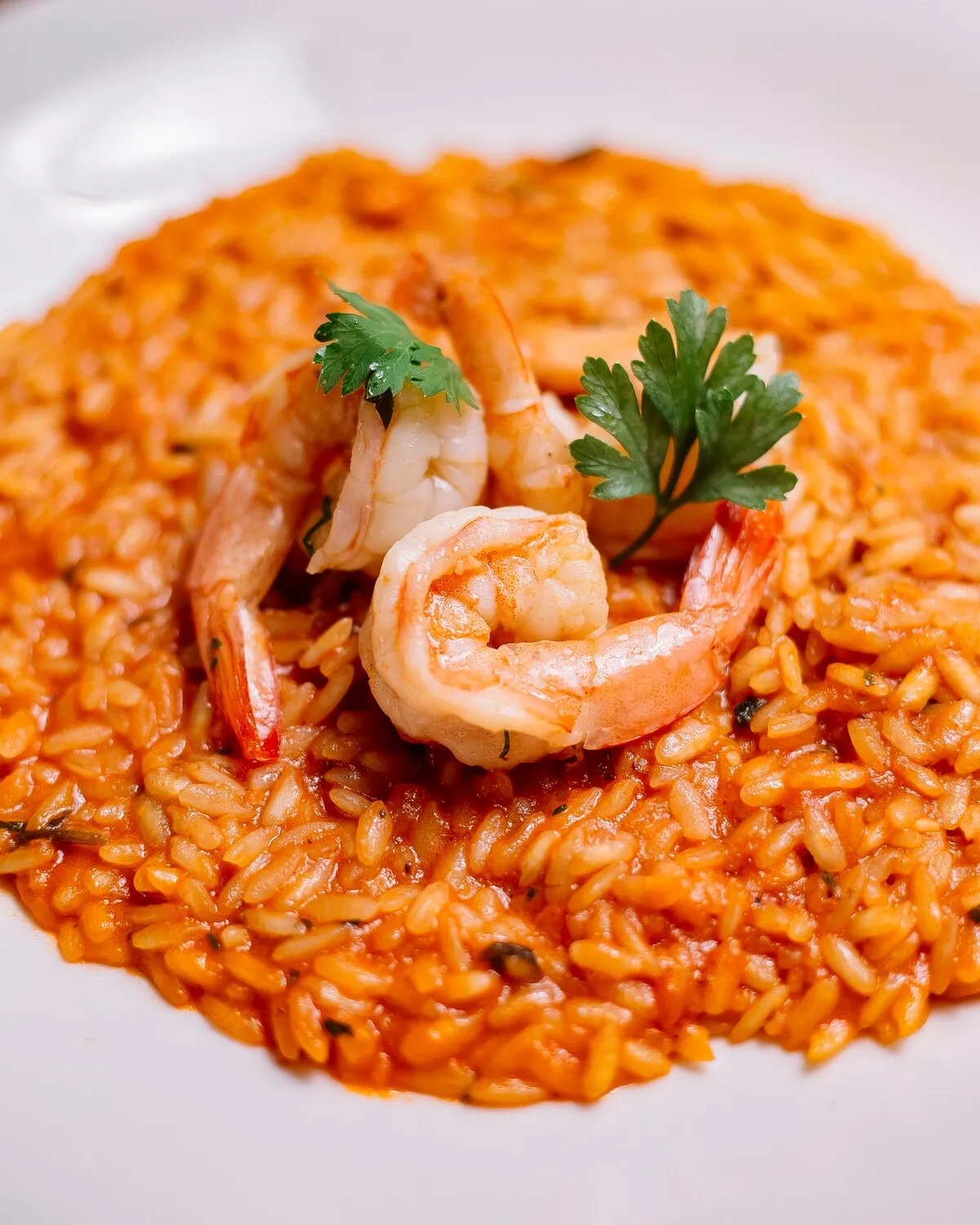
Seafood Risotto
Risotto prepared with a variety of fresh seafood.
Nutrition Facts
* The % Daily Value (DV) tells you how much a nutrient in a serving of food contributes to a daily diet. 2,000 calories a day is used for general nutrition advice.
Ristorante da Cherubino
Risotto, a northern Italian rice dish, evolved from earlier rice preparations introduced to Italy during the Middle Ages. The availability of short-grain rice varieties suitable for slow cooking, combined with local ingredients, led to the development of the creamy, flavorful risotto we know today. Seafood became a natural addition, given Italy's extensive coastline and fishing traditions.
Seafood risotto is considered a celebratory dish in many Italian households, often served during special occasions or family gatherings, particularly in coastal regions. It represents the bounty of the sea and the Italian appreciation for fresh, high-quality ingredients.
Regional Variations
Different coastal regions in Italy boast unique variations of seafood risotto, utilizing locally sourced seafood and incorporating regional herbs and spices.
Hospitality and Sharing
Risotto, including the seafood variety, is often served family-style, encouraging sharing and creating a sense of community around the table.
Ingredient Freshness
The emphasis on fresh, seasonal ingredients in seafood risotto reflects the Italian culinary philosophy of showcasing the natural flavors of the ingredients.
Seafood risotto is characterized by a harmonious blend of briny, oceanic flavors from the seafood, the rich creaminess of the rice, and the subtle sweetness of vegetables like onions and garlic.
The dominant flavors are derived from the seafood used, which can include shrimp, mussels, clams, scallops, and squid. These contribute a salty, savory, and often slightly sweet oceanic taste. The risotto itself provides a creamy, rich backdrop, enhanced by Parmesan cheese and butter. The dish is typically seasoned with garlic, onions, parsley, and white wine, adding layers of complexity and aromatic depth.
Use Arborio or Carnaroli Rice
These short-grain rice varieties are ideal for risotto because they release starch gradually during cooking, resulting in a creamy texture.
Warm Broth is Key
Always use warm broth when adding it to the rice. Cold broth can lower the temperature of the rice and affect the cooking process.
Don't Overcook the Seafood
Add the seafood towards the end of the cooking process to prevent it from becoming tough and rubbery. Cook it just until it's done.
Constant Stirring
Stir the risotto almost constantly throughout the cooking process to encourage starch release and prevent sticking.
Explore additional Rice dishes and restaurants
Explore RiceDiscover top dining spots and culinary experiences in Venezia.
Explore VeneziaLearn more about the food culture, restaurant scene, and culinary heritage of Italy.
Explore Italy